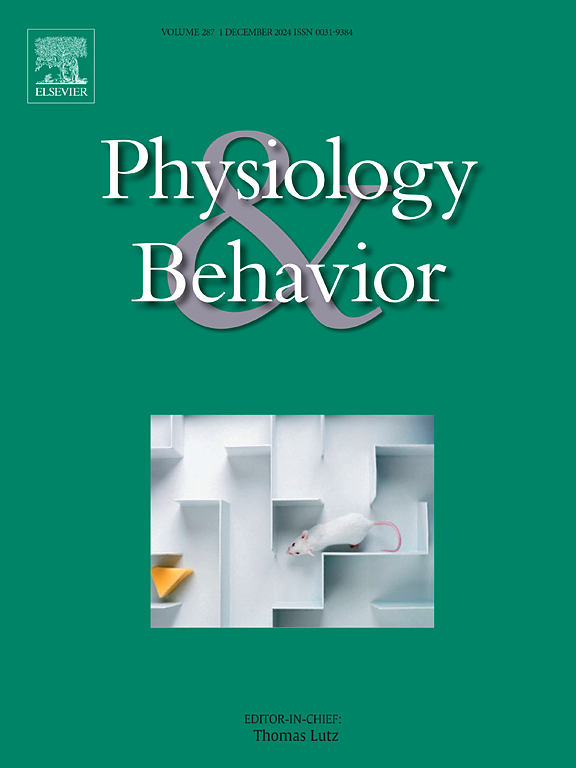食物刺激呈现对限制性进食者食物选择的影响:ERP 研究。
IF 2.5
3区 医学
Q2 BEHAVIORAL SCIENCES
引用次数: 0
摘要
节制饮食者是指为了减轻或保持体重而有意识地限制食物摄入量的人。随着肥胖人数的增加,节制饮食变得越来越普遍,越来越多的人采用节制饮食来应对肥胖。双重冲突理论认为,节制饮食者经常会遇到食物乐趣和体重控制之间的矛盾选择。本研究调查了不同体重管理目标的食物选择差异。研究假设成功和不成功的节制饮食者在面对食物/体重控制的冲突刺激时,在食物选择上存在差异。共有 49 名大学生参与了研究,并在食物选择任务中对 N2、P3 和 LPP 事件相关电位(ERPs)进行了调查。结果显示,不成功克制进食者(URE)的反应时间大于成功克制进食者(SRE)。ERP结果显示,与URE相比,SRE表现出更小的N2和更大的P3振幅,但我们没有发现两组之间LPP振幅的差异。研究结果表明,UREs 对食物线索表现出更高的敏感性和更小的抑制性,而我们没有发现动机和情绪显著性方面的差异。这是第一项调查SRE和UR面对不同的冲突目标时食物选择的研究,它丰富了理论模型,并为今后的研究提供了神经相关证据。本文章由计算机程序翻译,如有差异,请以英文原文为准。
Effect of food stimuli presentation on restrained eater's food choice: An ERP study
Restrained eaters are individuals who consciously follow a limited food intake diet to lose or maintain body weight. With the rising numbers of obesity cases, retrained eating has became more prevalent as more people adopt it to cope with obesity. The dual conflict theory states that restrained eaters often encounter conflicting choices of food pleasure and weight management. The present study investigated the difference in food choice regarding different presentations of the weight management goal. The study hypothesized difference in successful and unsuccessful restrained eaters’ food choice when presented with the conflicting food/weight maintenance stimuli. A total of 49 college students participated in the study and the N2, P3 and LPP event-related potentials (ERPs) were investigated during a food choice task. Results showed that the reaction time in unsuccessful restrained eaters (UREs) were greater than successful restrained eaters (SREs). The ERP results showed that SREs exhibited smaller N2 and greater P3 amplitudes than UREs, however, we did not find a difference in LPP amplitudes between the two groups. The findings suggest that the UREs demonstrated greater sensitivity and smaller inhibition to food cues, while we do not have supports for a difference in motivational and emotional salience. This is the first study that investigated the food choice of SREs and UREs when faced with different presentations of conflicting goals, which enriches the theoretical model and provides neural correlates evidence for future studies.
求助全文
通过发布文献求助,成功后即可免费获取论文全文。
去求助
来源期刊

Physiology & Behavior
医学-行为科学
CiteScore
5.70
自引率
3.40%
发文量
274
审稿时长
47 days
期刊介绍:
Physiology & Behavior is aimed at the causal physiological mechanisms of behavior and its modulation by environmental factors. The journal invites original reports in the broad area of behavioral and cognitive neuroscience, in which at least one variable is physiological and the primary emphasis and theoretical context are behavioral. The range of subjects includes behavioral neuroendocrinology, psychoneuroimmunology, learning and memory, ingestion, social behavior, and studies related to the mechanisms of psychopathology. Contemporary reviews and theoretical articles are welcomed and the Editors invite such proposals from interested authors.
 求助内容:
求助内容: 应助结果提醒方式:
应助结果提醒方式:


